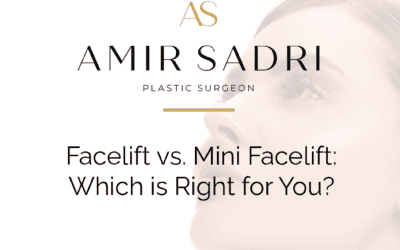Facelifts and mini facelifts have become popular cosmetic procedures for those looking to mitigate the signs of aging and achieve a more youthful appearance. Both procedures target sagging skin, wrinkles, and other age-related facial changes, but they differ in scope, technique, and recovery time. Understanding their effectiveness requires delving into what each procedure entails and the results they typically produce.
Traditional Facelifts
A traditional facelift, also known as a rhytidectomy, is a comprehensive procedure designed to address significant signs of aging on the face and neck. The surgery involves making incisions around the hairline, ears, and sometimes under the chin. Through these incisions, the surgeon lifts and tightens the underlying tissues and muscles, removes excess skin, and repositions the skin to create a smoother, tighter appearance. Traditional facelifts can dramatically reduce deep creases, sagging skin, and jowls, offering results that can last for up to a decade or more. The effectiveness of a facelift is largely contingent on the patient’s skin quality, bone structure, and lifestyle choices post-surgery.
Mini Facelifts
Mini facelifts, on the other hand, are less invasive and focus on specific areas of the face, typically the lower third including the jawline and neck. Often called a “weekend facelift” due to the shorter recovery time, this procedure involves smaller incisions, typically around the ears. The underlying tissues are tightened, but less skin is removed compared to a traditional facelift. This makes the mini facelift an appealing option for those with mild to moderate aging concerns and for individuals looking for a quicker recovery. While the results are generally subtler and may not last as long as a full facelift, mini facelifts still provide noticeable improvements, with results lasting approximately five to seven years.
Effectiveness and Considerations
The effectiveness of both traditional and mini facelifts also depends on the skill of the surgeon and the individual’s specific needs and expectations. When performed by a qualified and experienced surgeon, both procedures can yield natural-looking results that significantly improve the patient’s appearance and confidence. It is crucial for potential patients to have realistic expectations and understand that while facelifts and mini facelifts can provide significant improvements, they do not halt the aging process.
Additionally, the effectiveness of these procedures can be enhanced with adjunct treatments such as fillers, Botox, and laser therapies, which can address surface-level issues like fine lines and pigmentation. Post-operative care, including following the surgeon’s guidelines and maintaining a healthy lifestyle, also plays a critical role in the longevity and success of the facelift.
In conclusion, both facelifts and mini facelifts are effective at addressing signs of aging, with traditional facelifts offering more dramatic and long-lasting results, and mini facelifts providing a less invasive option with quicker recovery. The choice between the two should be made in consultation with a qualified cosmetic surgeon, considering the patient’s unique facial structure, aging patterns, and personal goals.




